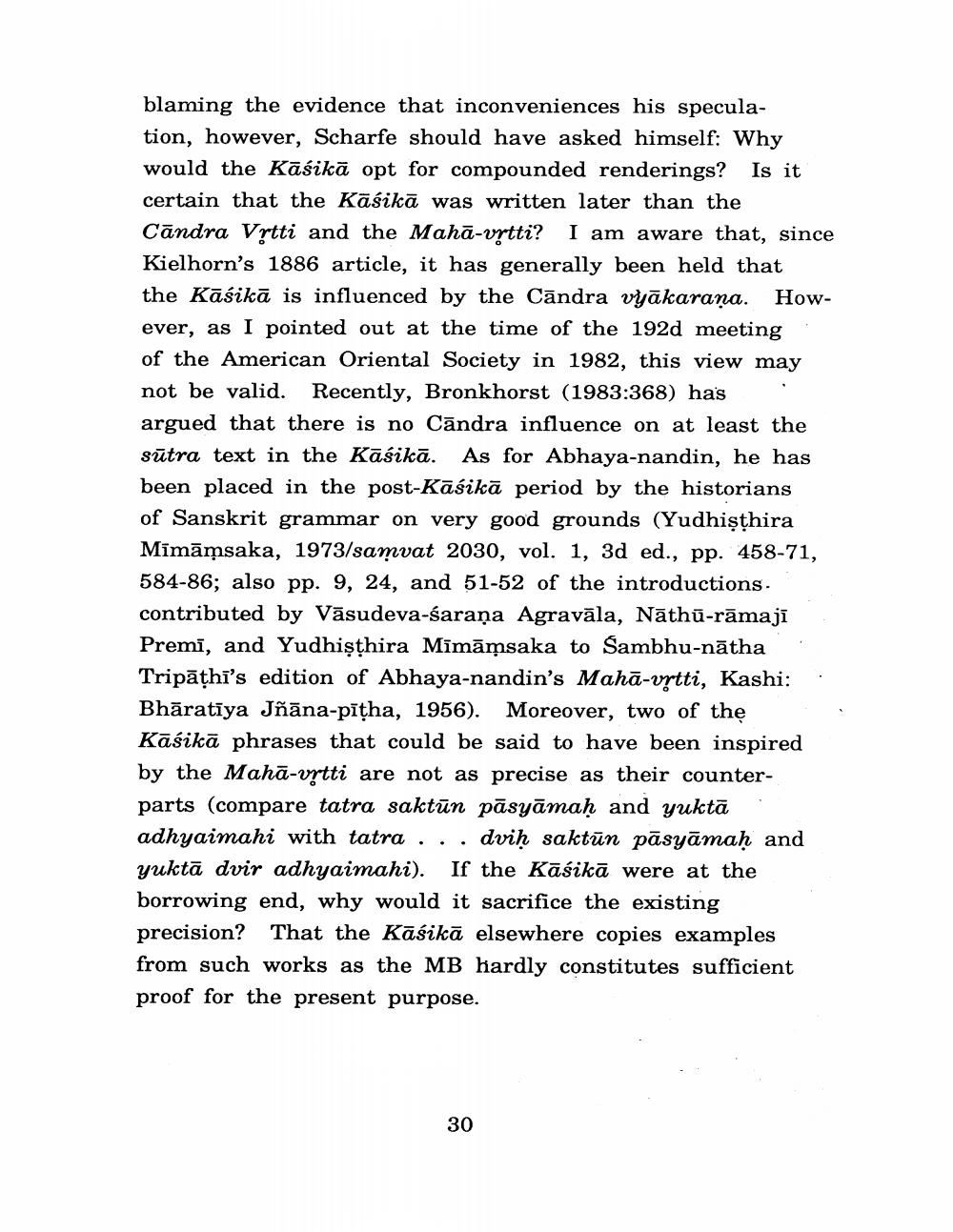________________
blaming the evidence that inconveniences his speculation, however, Scharfe should have asked himself: Why would the Kasika opt for compounded renderings? Is it certain that the Käsika was written later than the Candra Vrtti and the Maha-vṛtti? I am aware that, since Kielhorn's 1886 article, it has generally been held that the Kasika is influenced by the Candra vyakarana. However, as I pointed out at the time of the 192d meeting of the American Oriental Society in 1982, this view may not be valid. Recently, Bronkhorst (1983:368) has argued that there is no Candra influence on at least the sutra text in the Kāšikā. As for Abhaya-nandin, he has been placed in the post-Kaśikā period by the historians of Sanskrit grammar on very good grounds (Yudhiṣṭhira Mīmāmsaka, 1973/samvat 2030, vol. 1, 3d ed., pp. 458-71, 584-86; also pp. 9, 24, and 51-52 of the introductions. contributed by Vasudeva-saraṇa Agravāla, Nathū-rāmaji Premi, and Yudhiṣṭhira Mīmāmsaka to Sambhu-natha Tripathi's edition of Abhaya-nandin's Mahā-vṛtti, Kashi: Bharatiya Jñana-pīṭha, 1956). Moreover, two of the Kaśikā phrases that could be said to have been inspired by the Maha-vṛtti are not as precise as their counterparts (compare tatra saktun pāsyāmaḥ and yuktā adhyaimahi with tatra... dviḥ saktun pāsyāmaḥ and yukta dvir adhyaimahi). If the Kasika were at the borrowing end, why would it sacrifice the existing precision? That the Käsikā elsewhere copies examples from such works as the MB hardly constitutes sufficient proof for the present purpose.
30




